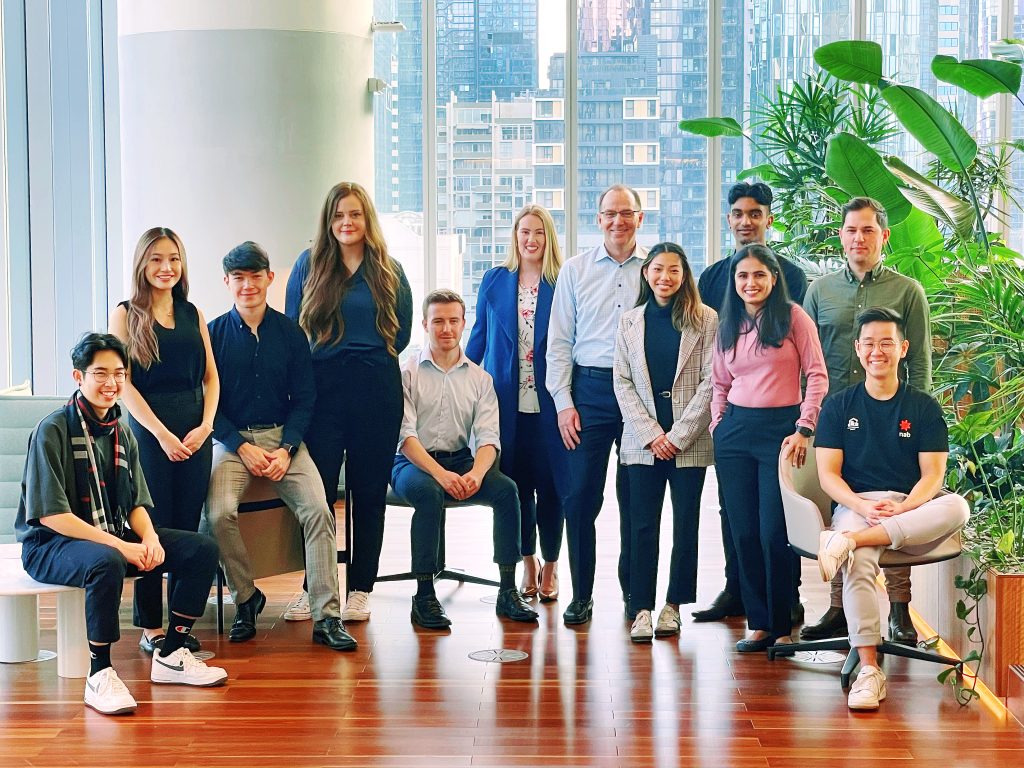NAB’s Chief Technology and Operations Officer Patrick Wright opens up on how the bank is addressing skills shortages.
When I arrived at NAB in 2017, most of our technology and operations colleagues worked for someone else.
Over the last few years, we have made a lot of progress to take back our company.
Since 2019, we’ve recruited more than 4,300 technologists into NAB. In four years, we’ve moved our technology and operations workforce from around 70% outsourced down to about 39% at the end of last year.
We’re not done with that journey, but one of the biggest challenges we face is getting the people with the skills we need.
According to the Technology Council of Australia, our country needs one million people working in technology roles by 2025. Based on current estimates, we need around 140,000 more workers.
Last year, 88,000 more people left Australia than came in, according to ABS data.
There are 500,000 fewer temporary migrants and half as many international students in Australia now compared with before COVID in 2019.
Australia currently has around 420,000 job vacancies, the highest level on record and almost double the pre-pandemic peak.
Right now, just in our technology area, we have more than 700 jobs open and we’ll need to bring in around 1,500 people to my team this year.
We’re not just competing against other banks for this talent.
Businesses large and small are digitising operations as they look to better meet the needs and expectations of customers.
Fostering talent
At the same time, NAB continues to grow. We’re integrating 86 400 with UBank. We’ve acquired Citi Bank’s Australian consumer business. These are big, exciting projects.
As we grow, we will continue to in-source a lot more from third party contractors and vendors.
We want the best people to come and join us. We’re working on a number ways to attract great people and retain our talent.
We have invested a lot in development and upskilling.
In 2018, we launched the NAB Cloud Guild. We’ve trained more than 7000 people in cloud and have more industry-standard Cloud certifications than just about any other company in the southern hemisphere outside the cloud companies themselves.
The model has been so successful that other organisations have followed our lead and setup similar training programs.
We’ve also worked closely with Universities to boost our talent pipeline. We have one of Australia’s largest technology internship programs with more than 500 joining us this year.
It’s providing opportunities for students from universities across Australia including Monash, Melbourne, Deakin, UNSW, UQ and others to learn and grow their skills.
Tapping into global capabilities
Alongside that, we’re also looking to tap into rich global talent pools in bigger markets, including Vietnam and India.
I fundamentally believe we’re going to need skills around the world to fill the roles we have.
We setup the NAB Innovation Centre Vietnam with a partner in 2019 and we recently took full ownership of that Centre.
We’ve got software developers, engineers, UX designers and data analysts and they’re working alongside colleagues in Australia on projects that matter to our customers.
I went to visit our team in Vietnam a couple of weeks ago and it was great to see the energy and enthusiasm shown by our colleagues in Ho Chi Minh City.
We’re also about to setup a similar Centre in India.
We currently have around 3,000 vendor resources in India today and we’ve had them there for 15 years. Our aim is to bring a lot more of that work in-house, under our control.
We will be able to better align the work that needs to be done alongside our other global offices. It will allow us to work in parallel time zones that meet the needs of our global colleagues and customers.
It will also allow us to better run our operations end-to-end in-house, remove hand-offs and improve efficiencies across the global locations.
As our business grows we will continue this approach and get the skills required wherever we can.
There’s no silver bullet to solve the skills shortage.
We’re working hard to help address it in a number of ways so we can continue delivering the services and experiences our customers expect.





